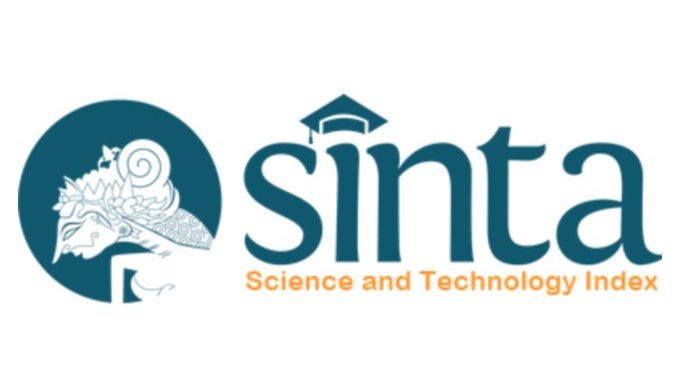Prediction Model for Pre-Eclampsia in a Low-Resource Setting: A Systematic Literature Review
DOI:
https://doi.org/10.55175/cdk.v51i9.1102Keywords:
Low-resource setting, prediction model, pre-eclampsiaAbstract
The mechanism of preeclampsia is still unknown, so early diagnosis and termination of pregnancy are definitive therapies. A prediction model to be implemented in a low-resource setting is needed to predict the risk of pre-eclampsia in pregnant women. Pre-eclampsia prediction models also play a role in clinical decision-making, assisting with information, education, and communication (IEC) and considering the administration of aspirin prophylaxis. This study aims to systematically review the development of pre-eclampsia prediction models in a low-resource setting. PubMed, ScienceDirect, and Wiley Online Library databases between January 2019 and June 2023 were systematically reviewed. Article identification, screening, and selection of relevant articles, as well as data extraction, were carried out independently by the authors following PRISMA guidelines. Of the six articles that met the requirements, models that used maternal characteristics, risk factors, and physical examination. Laboratory tests improved the accuracy of pre-eclampsia prediction models in a low-resource setting. Examination with Doppler ultrasound and biomarkers could significantly improve the sensitivity and specificity of prediction models but could not be universally applied in a low-resource setting.
Downloads
References
Magee LA, Brown MA, Hall DR, Gupte S, Hennessy A, Karumanchi SA, et al. The 2021 International Society for the Study of Hypertension in Pregnancy classification, diagnosis & management recommendations for international practice. Pregnancy Hypertens. 2022;27(October 2021):148–69. DOI:10.1016/ j.preghy.2021.09.008.
Khan B, Yar RA, Khakwani A khan, Karim S, Ali HA. Preeclampsia incidence and its maternal and neonatal outcomes with associated risk factors. Cureus 2022 Nov 6;14(11):e31143. DOI: doi: 10.7759/cureus.31143.
Wahyunindita RN, Sari RDP. Severe pre-eclampsia with partial hellp syndrome in Multigravida Preterm Pregnancy. Indones J Glob Heal Res. 2022;4(1):1–8. DOI: 10.37287/ijghr.v4i1.706.
Bisson C, Dautel S, Patel E, Suresh S, Dauer P, Rana S. Preeclampsia pathophysiology and adverse outcomes during pregnancy and postpartum. Front Med (Lausanne). 2023;10:1144170. DOI: 10.3389/fmed.2023.1144170.
Fox R, Kitt J, Leeson P, Aye CYL, Lewandowski AJ. Preeclampsia: Risk factors, diagnosis, management, and the cardiovascular impact on the offspring. J Clin Med. 2019 Oct;8(10):1625. DOI: 10.3390/jcm8101625.
MacDonald TM, Walker SP, Hannan NJ, Tong S, Kaitu’u-Lino TJ. Clinical tools and biomarkers to predict preeclampsia. EBioMedicine. 2022 Jan:75:103780. DOI: 10.1016/j.ebiom.2021.103780.
Awor S, Abola B, Byanyima R, Orach CG, Kiondo P, Kaye DK, et al. Prediction of pre-eclampsia at St. Mary’s hospital lacor, a low-resource setting in northern Uganda, a prospective cohort study. BMC Pregnancy Childbirth 2023 Feb 8;23(1):101. DOI: 10.1186/s12884-023-05420-z.
Shayan A, Sourinejad H, Refaei M, Masoumi SZ, Tapak L, Soltani F. Predictors of preeclampsia based on a 10-year case-control study. J Fam Reprod Heal. 2019 Oct 22;13(1):14.
Chen X, Yuan L, Ji Z, Bian X, Hua S. Development and validation of the prediction models for preeclampsia: A retrospective, single-center, case-control study. Ann Transl Med. 2022 Nov;10(22):1221. DOI: 10.21037/atm-22-4192.
Kadhim AAM, Ali HM, Hameed RH. Analysis of a predictive model of preeclampsia risk in Iraqi women. Int J Health Sci (Qassim). 2022 Sep 13;6(S7):3878–91. DOI: 10.53730/ijhs.v6nS7.12675.
Xue Y, Yang N, Gu X, Wang Y, Zhang H, Jia K. Risk prediction model of early-onset preeclampsia based on risk factors and routine laboratory indicators. Life 2023 Aug 1;13(8):1648. DOI: 10.3390/life13081648.
Kusuma RA, Nurdiati DS, Wilopo SA. Alternatives of risk prediction models for preeclampsia in a low middle-income setting. Open Access Maced J Med Sci. 2022 May 16;10(B):1745–50. DOI:10.3889/oamjms.2022.9030.
Sufriyana H, Handayani L, Yuliana F, Syafi’i T. Potensi modifikasi model PIERS untuk prediksi luaran ibu dengan preeklamsia pada rumah sakit tipe B di Indonesia: Penelitian retrospektif di RSUD Ansari Saleh Banjarmasin, Kalimantan Selatan. Med Heal Sci J. 2018 Apr 28;1(1):32-44. DOI:10.33086/mhsj.v1i1.614.
Ukah UV, Payne B, Hutcheon JA, Ansermino JM, Ganzevoort W, Thangaratinam S, et al. Assessment of the fullPIERS risk prediction model in women with early-onset preeclampsia. Hypertension. 2018;71(4):659–65. DOI: 10.1161/HYPERTENSIONAHA.117.10318.
Sufriyana H, Wu YW, Su ECY. Artificial intelligence-assisted prediction of preeclampsia: Development and external validation of a nationwide health insurance dataset of the BPJS kesehatan in Indonesia. EBioMedicine. 2020;54:102710. DOI: 10.1016/j.ebiom.2020.102710.
Aljameel SS, Alzahrani M, Almusharraf R, Altukhais M, Alshaia S, Sahlouli H, et al. Prediction of preeclampsia using machine learning and deep learning models: A review. Big Data Cogn Comput. 2023;7(1):32. DOI: 10.3390/bdcc7010032.
Al-Rubaie ZTA, Hudson HM, Jenkins G, Mahmoud I, Ray JG, Askie LM, et al. Prediction of pre-eclampsia in nulliparous women using routinely collected maternal characteristics: A model development and validation study. BMC Pregnancy Childbirth 2020 Jan 6;20(1):1–14.
Al-Rubaie ZTA, Askie LM, Hudson HM, Ray JG, Jenkins G, Lord SJ. Assessment of NICE and USPSTF guidelines for identifying women at high risk of pre-eclampsia for tailoring aspirin prophylaxis in pregnancy: An individual participant data meta-analysis. Eur J Obstet Gynecol Reprod Biol. 2018 Oct 1;229:159–66. DOI: 10.1016/j.ejogrb.2018.08.587.
Downloads
Published
How to Cite
Issue
Section
License
Copyright (c) 2024 Lucky Pestauli Damanik

This work is licensed under a Creative Commons Attribution-NonCommercial 4.0 International License.





















